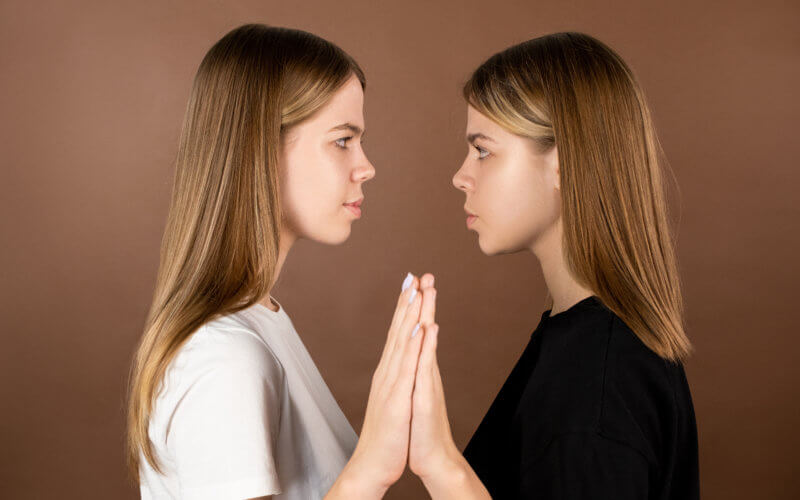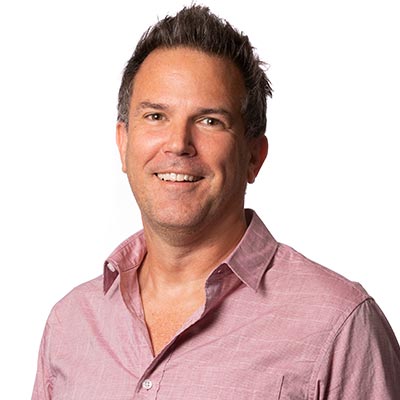
When zombies trail through graveyards and vampires steal through sleepy towns, the threat is obvious, but not all hauntings come with chilling ghosts and ghoulish scares.
It’s much harder to outrun the monster that comes from within.
Adam Golub, professor of American studies at Cal State Fullerton, is interested in analyzing these inner monsters known as doppelgängers or “shadow selves.” Similar to traditional monsters, doppelgängers can appear in different forms — a robotic clone, a double from another dimension or an alien body snatcher, but they always mirror a version of the original.
“Monsters represent something that does not belong in the community: a zombie, a vampire, a witch, King Kong, Godzilla or Slenderman. These are monsters that come from elsewhere. They’re outsiders that are trying to invade, disrupt and haunt our lives,” said Golub. “The doppelgänger is a monster that is not apart from us. It’s a monster that is a part of us.”
Golub’s new book project, “America’s Shadow: A Cultural History of the Doppelgänger,” examines how doppelgängers have evolved since they first joined the “American monster mash” scene in the early 19th century.
From Edgar Allan Poe’s 1839 short story “William Wilson” to modern films like Netflix’s “Living With Yourself” starring Paul Rudd, Golub wants to understand why these narratives have survived the test of time and what they reveal about society’s broader fears and anxieties.
“Monsters are make believe, but the fears that they embody are real and how we act on those fears can have dramatic consequences for how we view ourselves and how we view others,” said Golub.
Throughout history, the doppelgänger narrative has evolved into a cross-disciplinary concept that appears in multiple expressive forms, including literature, film, television, poetry, music, pop culture, religion, folklore, crime and politics.
Before doppelgängers made an appearance in the American cultural landscape, people were afraid of sea monsters, witches, ghosts and demons. By the late 1830s, their fears shifted to “the haunting within,” explained Golub.
To understand the emergence of these stories, Golub studied the cultural context of that time period, looking for historical clues to explain why society was susceptible to the idea of duplication and fragmented identities.
Golub shared that by the 1840s, photography made it possible for people to “gaze upon themselves” completely from the outside. This technological advance brought the idea of “double selves” to the forefront of people’s lives.

“There was also a growing fascination with psychology and consciousness during this time period. Americans became interested in the idea of dual consciousness, the idea that the human mind has a divided quality to it,” said Golub.
One of the doppelgänger’s early historical appearances occurred in 1860 when Abraham Lincoln allegedly claimed to see two versions of himself staring back in the mirror before his presidential reelection. With America on the brink of civil war, Golub said that the story symbolized society’s fears about identity and duplicity as the nation was confronted with the possibility of splitting its existence into north and south.
Today, doppelgänger narratives make up a significant portion of Hollywood features like Alfred Hitchcock’s 1958 film, “Vertigo,” and Philip Kaufman’s science fiction film, “Invasion of the Body Snatchers.” The doppelgänger trope has also made its way into pop culture with well-known doubles like Dr. Jekyll and Mr. Hyde, and Superman and Bizarro.
His research also follows doppelgängers into the technological age of the 21st century with digital duplicates appearing on the internet. He said that some of the most recognizable digital doppelgänger forms are the carefully curated personas that people create for social media.
Looking at social feeds filled with their best moments and accomplishments, Golub said that a person might ask themselves, “‘Which version is the real me? Which performance is my true self? Is my doppelgänger leading a better life than me on Instagram?’”
“Arguably, digital culture has us all feeling a little bit fragmented in our lives. We’re all navigating and negotiating these various online personas.”
Golub’s interdisciplinary research into the cultural relevance of doppelgängers will continue as he completes his book manuscript in the coming year. “America’s Shadow: A Cultural History of the Doppelgänger” will join ranks with his previously published work about monsters, fan culture, true crime and popular culture.